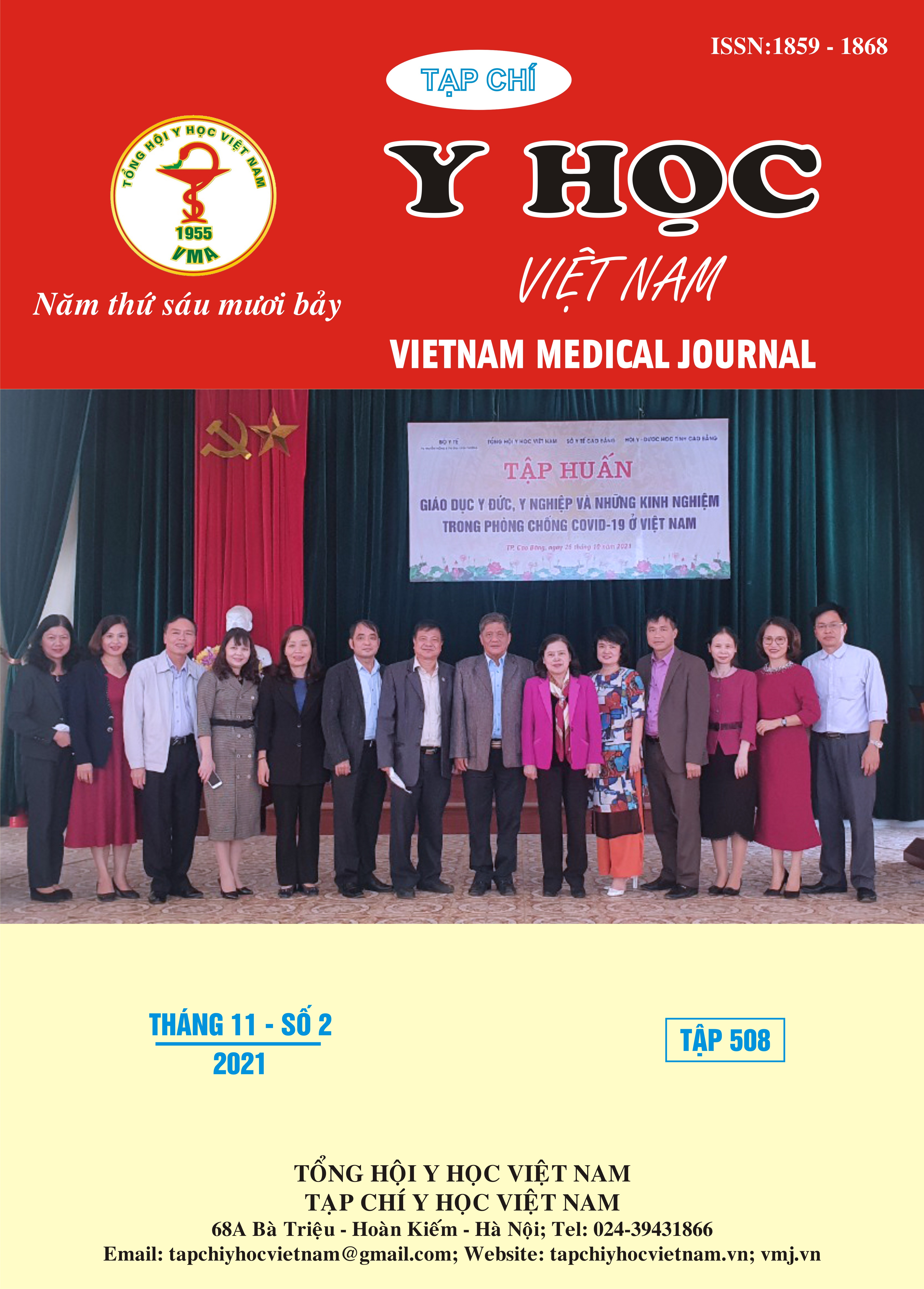ASSESSMENT OF SURGERY RESULTS OF ROBOTIC ASSISTED PARTIAL KNEE REPLACEMENT AT BACH MAI HOSPITAL
Main Article Content
Abstract
Aims: Describe epidemiological, imaging features and evaluate the surgical results of Robotic assisted partial knee replacement. Patients and methods: Retrospective and descriptive study of 32 patients who were diagnosed with knee osteoarthritis and treated partial knee replacement at Bach Mai hospital from 3/2017 to 4/2019. Results: In 32 patients, the female/male ratio was 5,4/1, the mean age was 65 years. According to Kellgren and Lawrence classification,the rates of patients with grade II and grade III were 18,8% and 81,2%, respectively.The Lysholm score algorithm significantly improved the age groups, the degree of knee osteoarthritis and BMI. Conclusion: Knee osteoarthritis is becoming more and more common, besides total knee replacement, partial knee replacement has been developed for patients with a single compartment knee osteoarthritis, along with the development of science and technology of joint replacement. Robot-assisted partial knee replacement is developed and achieved with good results compared to traditional partial knee replacement.
Article Details
Keywords
Partial knee replacement, Robot
References
2. Dretakis K, Igoumenou VG. Outcomes of robotic-arm-assisted medial unicompartmental knee arthroplasty: minimum 3-year follow-up. Eur J Orthop Surg Traumatol Orthop Traumatol. 2019;29(6):1305-1311. doi:10.1007/s00590-019-02424-4
3. Mahajan A, Patni R. Menopause and Osteoarthritis: Any Association ? J -Life Health. 2018;9(4):171-172. doi:10.4103/jmh.JMH_157_18
4. Freigang V, Rupp M, Pfeifer C, et al. Patient-reported outcome after patient-specific unicondylar knee arthroplasty for unicompartmental knee osteoarthritis. BMC Musculoskelet Disord. 2020;21(1):1-9. doi:10.1186/s12891-020-03776-3
5. Pearle AD, van der List JP, Lee L, Coon TM, Borus TA, Roche MW. Survivorship and patient satisfaction of robotic-assisted medial unicompartmental knee arthroplasty at a minimum two-year follow-up. The Knee. 2017;24(2):419-428. doi:10.1016/j.knee.2016.12.001
6. Hart D.J., Spector T. D. (2012). Change in body mass index during middle age affects risk of total knee arthoplasty due to osteoarthritis: A 19-year prospective study of 1003 women. The Knee; 19, 316-319.
7. Krych AJ, Reardon P, Sousa P, Pareek A, Stuart M, Pagnano M. Unicompartmental Knee Arthroplasty Provides Higher Activity and Durability Than Valgus-Producing Proximal Tibial Osteotomy at 5 to 7 Years. J Bone Joint Surg Am. 2017;99(2):113-122. doi:10.2106/JBJS.15.01031
8. Comparison of High Tibial Osteotomy and Unicompartmental Knee Arthroplasty at a Minimum Follow-Up of 3 Years - ScienceDirect. Accessed September 22, 2021. https:// www.sciencedirect.com/ science/ article/abs/pii/S0883540312003622
9. Hasan Raza Mohammad, Stephen Mellon, Andrew Judge, Christopher Dodd David Murray (2021). The efect of age on the outcomes of cementless mobile bearing unicompartmental knee replacements. Knee Surgery, Sports Traumatology, Arthroscopy https://doi.org/ 10.1007/s00167-020-06428-0


